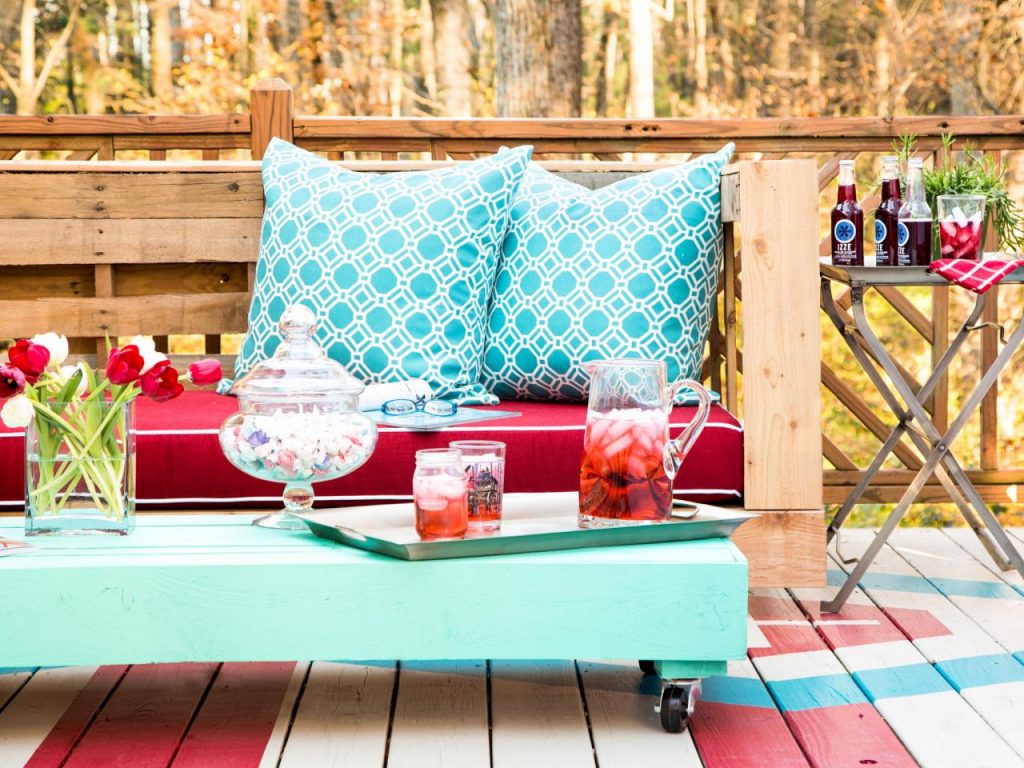Bäume Kalken? Prüfen Sie, Wie Man Baumstammfarbe Verwendet
Viele halten das Kalken für unnötig und machen sich nicht die Mühe, dieses Verfahren durchzuführen. Ist das wirklich so? Das Kalken ist eine der besten Methoden zum Schutz von Baumstämmen und Büschen. Haben Sie noch nie von einem Anstrich der Baumstämme gehört und wissen nicht, warum, wie und vor allem wann man ihn durchführen sollte? Informieren Sie sich über die Vorteile des Anstrichs von Baumstämmen und wie man ihn richtig durchführt.

Was ist das Kalken im Gartenbau?
Das Kalken von Bäumen ist eine einfache Pflegebehandlung, die jährlich in Gärten in winterharten Zonen durchgeführt wird. Die Stämme von Obstbäumen und anderen größeren Bäumen sowie von Ziersträuchern werden mit einem speziellen Anstrich versehen, der etwa die Hälfte ihrer Höhe ausmacht.
Obwohl diese Methode bei vielen Gartenbesitzern in Vergessenheit geraten ist, verwenden professionelle Gärtner oft Kalken - daran kann man sie erkennen!
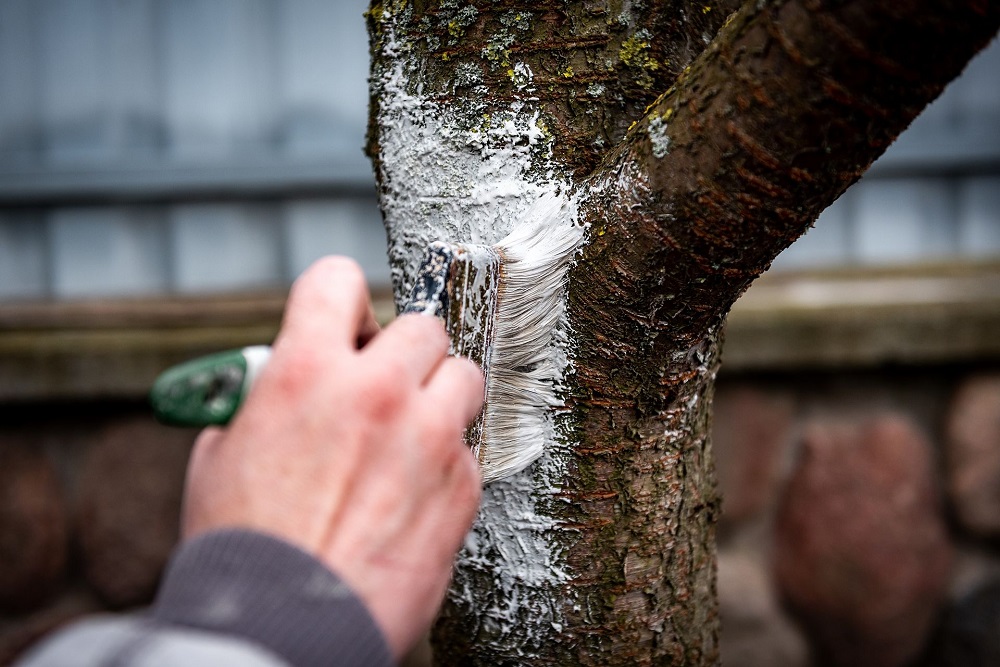
Warum Baumstämme mit Kalk streichen?
Kalk, oft auch Tünche genannt, ist ein Produkt, das verwendet wird, um Baumstämme vor wechselnden Wetterbedingungen zu schützen. Im Spätherbst, Winter und sogar im frühen Frühjahr schwanken die Temperaturen, wobei es tagsüber und nachts extreme Unterschiede gibt. Die Baumstämme erwärmen sich tagsüber in der Sonne, und wenn sie nachts kalten Temperaturen ausgesetzt sind, neigen sie dazu, zu brechen. Sogenannte Kälteschäden können auftreten. Bäume und Sträucher, die von solchen Schäden betroffen sind, erholen sich im Frühjahr möglicherweise nicht mehr.
Dank weißer Baumstammfarbe werden Sonnenstrahlen nicht vollständig absorbiert, sondern größtenteils reflektiert. Dadurch heizt sich der Stamm nicht auf und das Risiko von Schäden in der Nacht ist viel geringer.
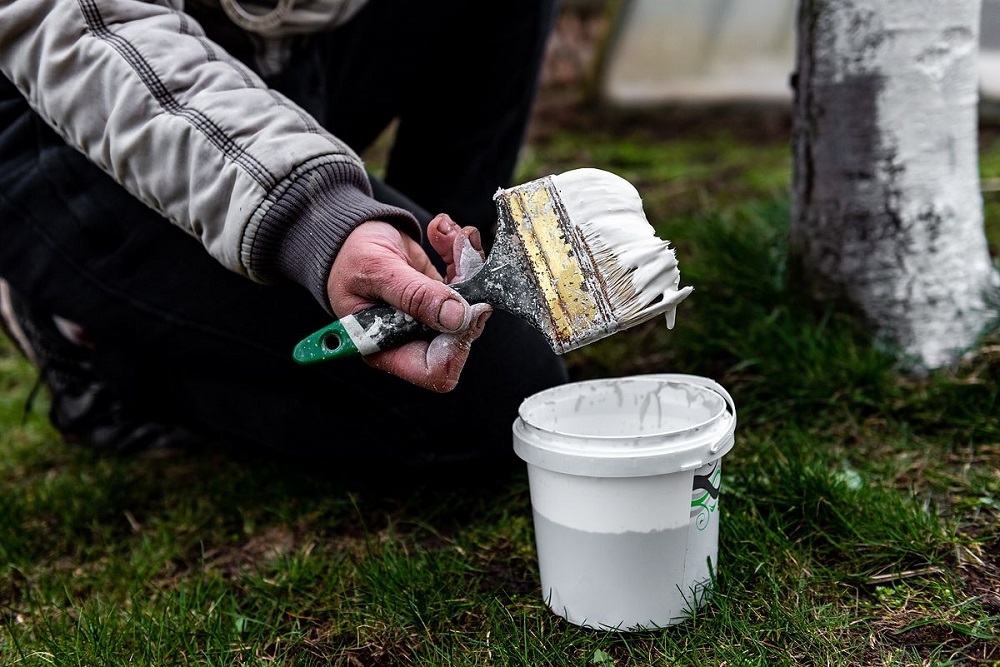
Wann verwendet man Kalk im Garten?
Achten Sie darauf, dass Sie in Ihrem Garten kalken, bevor die Tages- und Nachttemperaturen zu schwanken beginnen. Viele Gärtner entscheiden sich Ende November für die Kalkung ihrer Bäume. Dies sollte jedoch nicht später als Mitte Dezember geschehen, da die Pflanzen dann viel eher beschädigt werden können.
Solche Gartenarbeiten sollten bis zum offiziellen Wintereinbruch, also bis zum 21. Dezember, abgeschlossen sein.
Welche Art von Baumstammfarbe sollte ich verwenden?
Erfahrene Gärtner verwenden die so genannte Kalkmilch. Was ist das? Es handelt sich einfach um eine Lösung von Kalziumoxid in Wasser. Das empfohlene Mischungsverhältnis ist 1:5. Das bedeutet, dass man 5 Liter Wasser pro 1 kg Branntkalk benötigt. Vergewissern Sie sich, dass Sie alles gründlich umrühren, und schon ist die Kalklösung gebrauchsfertig.
Wenn Sie keine Erfahrung haben und befürchten, etwas falsch zu machen, verwenden Sie gekaufte Produkte. Die meisten Gärtnereien bieten Kalkprodukte wie Farbe für Baumstämme an - zu einem attraktiven Preis.
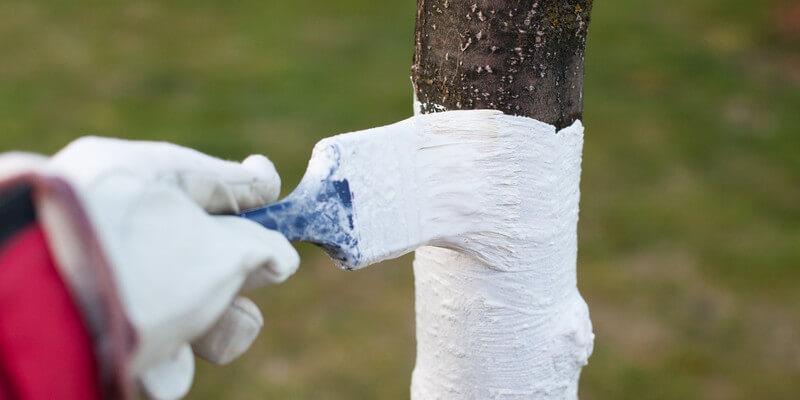
Baumstämme weiß anmalen - wie geht das?
Das Kalken kann sowohl bei jungen als auch bei alten Bäumen durchgeführt werden. Beide sind anfällig für Temperaturschwankungen und schwer zu heilende Verletzungen.
Das Streichen von Baumstämmen mit Kalk ist einfach. Wenn Sie eine fertige Lösung oder ein fertiges Produkt haben, tauchen Sie einfach einen Pinsel hinein und streichen Sie die Baumstämme - ungefähr bis zur Hälfte ihrer Höhe oder bis zum Beginn der Äste.
Manchmal beschließen Gärtner, die Schutzschicht auch auf die Äste sehr empfindlicher Obstbäume aufzutragen. Das schadet dem Baum zwar nicht, ist aber eine Garantie dafür, dass er den Winter übersteht, wenn es zu einer schweren Wetteranomalie kommt.
Müssen Sie das Kalken wiederholen?
Je nach Wetterlage müssen Sie die Kalkung Ihrer Bäume eventuell wiederholen. Wann ist das der Fall? Höchstwahrscheinlich dann, wenn Sie sich entschlossen haben, die Bäume im Dezember zu kalken, wenn das Wetter die meiste Zeit regnerisch ist. Dann ist es ganz normal, dass ein Teil der Schutzschicht mit dem fließenden Wasser weggespült wird.
Außerdem muss man das Kalken wiederholen, wenn die Temperaturschwankungen und Fröste über einen längeren Zeitraum anhalten. Manchmal werden sie im März und April vorhergesagt. In diesem Fall müssen die Bäume zwischen Januar und Februar erneut gesichert werden.
Wie kann man Baumstämme schützen, außer durch Kalken?
Das Kalken ist eine der einfachsten, schnellsten und zugleich billigsten Möglichkeiten, Gärten im Winter zu schützen. Das heißt aber nicht, dass Gärtner nicht auch andere Methoden anwenden - die meisten von ihnen garantieren allerdings keine so guten Ergebnisse.
Weißes Landschaftsgewebe ist eine gute Alternative zum Kalken. Es wird verwendet, um Baumstämme zum Schutz vor niedrigen Temperaturen einzuwickeln.
Landwirte, die Nutzpflanzen anbauen, verwenden Stroh, das bei der Ernte gesammelt wird. Es funktioniert aber nur bis zu einem bestimmten Zeitpunkt. Seine Wirksamkeit nimmt mit den Temperaturen ab.
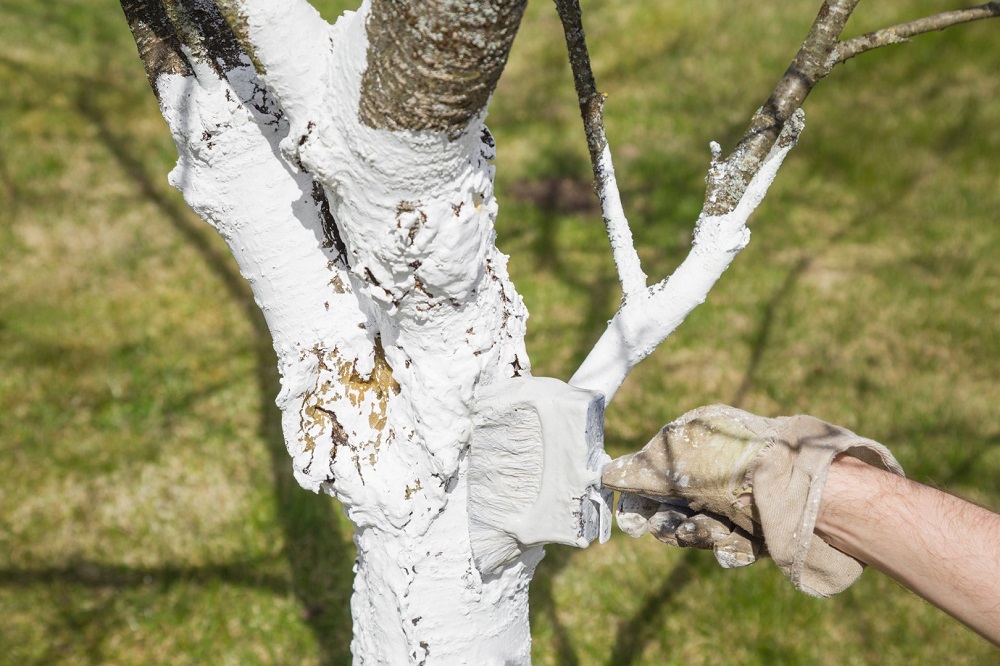
📍 Wie kalkt man Baumstämme?
Baumstämme werden üblicherweise mit einer Kalkmilch gestrichen, einer Lösung aus gebranntem Kalk und Wasser. Sie können auch eine im Handel erhältliche Baumstammfarbe verwenden. Außerdem brauchen Sie einen großen, weichen Pinsel und Zeit, um alle Bäume im Garten zu streichen.
📍 Wann sollte ich die Bäume mit Kalk streichen?
Das Kalken von Bäumen sollte vor dem ersten Frost erfolgen, also im Spätherbst oder zu Beginn des Winters. Es ist ratsam, dies früher zu tun, damit das Wetter die Bäume nicht überrascht und sie nicht beschädigt.
📍 Ist das Kalken von Obstbäumen wirksam?
Baumstammfarbe ist eine der wirksamsten und billigsten Methoden zum Schutz von Obstbäumen. Denken Sie daran, dass Sie bei starkem Regen oder Schneefall das Kalken wiederholen müssen.
📍 Streichen von Baumstämmen mit Kalk - ist das schwierig?
Das Kalken von Baumstämmen ist selbst für unerfahrene Gärtner eine einfache Aufgabe. Alles, was Sie brauchen, ist etwas Kalkmilch, einen weichen Pinsel und etwas Wissen, das Sie im Internet finden können.
Empfohlene Artikel




